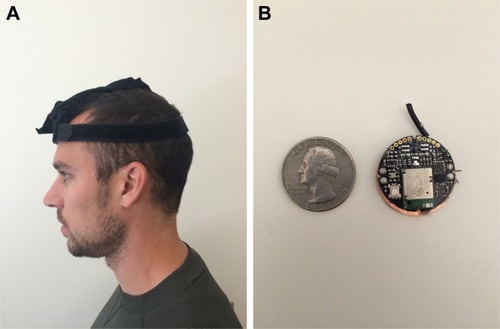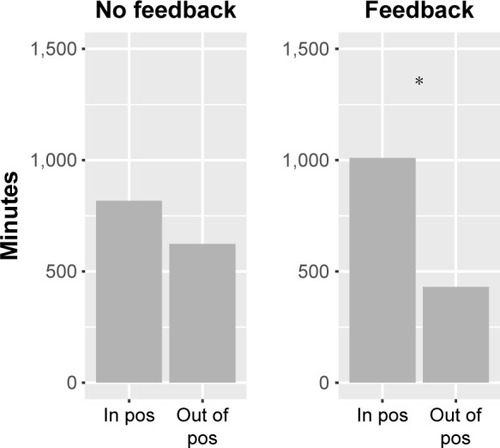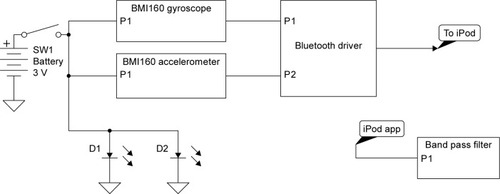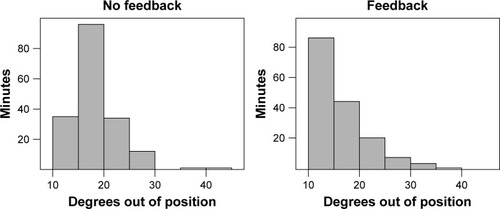Figures & data
Figure 2 (A) The translucent box represents the ideal position while the “happy face” represents the patient’s actual head position relative to it. The patient, although not perfectly aligned, is within the acceptable tolerance. The device provides real-time feedback; “just right” is displayed to visually reinforce patient position, and the alarm feature is silenced when the patient is within the set limits. (B) The patient exceeds the device tolerance, and, as in (A), the device provides real-time feedback. “Tilt right” instructs the patient how to move into correct position, and the alarm sounds after 2 minutes of malposition. The image mirrors the patient’s position.

Figure 3 (A) Wearing the sensor embedded in the headband. (B) The sensor without casing next to a US quarter for size reference.

Table 1 Time out of position of each subject
Figure 4 The total time spent in position (pos) compared to total time spent out of position, both with audiovisual feedback and without. The change in total time spent in position for pooled participants without feedback was not statistically significant (P=0.55), whereas when participants were given feedback on head position, statistical significance was attained (P<0.05). *Statistically significant.



